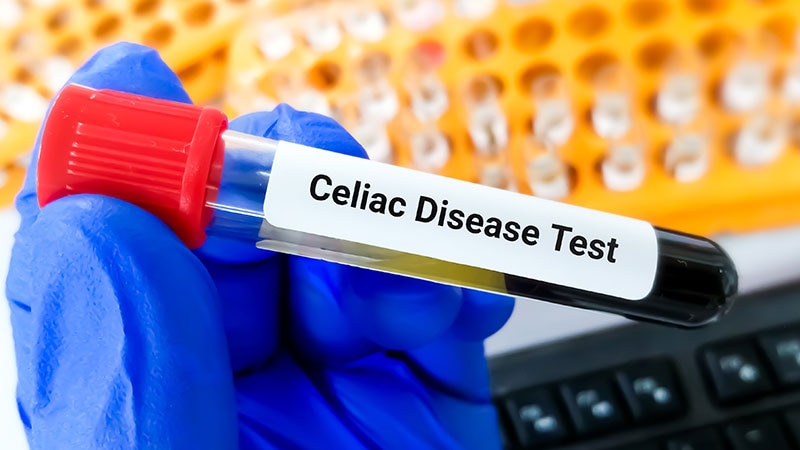National Screening for Celiac Disease in Italian Children: Evaluating the Benefits and Challenges
Core Concepts
Nationwide screening for celiac disease in Italian children can help uncover undiagnosed cases and provide valuable insights, but challenges remain regarding the long-term benefits and cost-effectiveness of such a program.
Abstract
The article discusses the decision by the Italian Parliament to approve national screening for celiac disease in children aged 1-17 years. This follows a screening trial led by Carlo Catassi, a professor of pediatrics, which found a higher-than-expected prevalence of celiac disease in Italian children, with only 40% of cases previously diagnosed.
The debate around celiac disease screening has been ongoing for nearly 30 years. While some argue that screening can lead to false positives and turning healthy individuals into patients, the proponents believe that early diagnosis is crucial to prevent long-term health complications, even in asymptomatic cases.
The article highlights the reliability of the anti-tissue transglutaminase immunoglobulin A (anti-tTG IgA) test as a screening tool, with a sensitivity of 93% and specificity of 98%. However, it also notes that a small percentage of people with celiac disease may have IgA deficiency, leading to false negatives.
The US Preventive Services Task Force has concluded that the evidence is insufficient to assess the balance of harms and benefits of celiac disease screening. Wanda Nicholson, the current chair of the task force, emphasizes the need for more studies comparing the outcomes of screened and unscreened individuals, as well as the impact of gluten-free diets on those who test positive.
Despite some reservations, the article suggests that the Italian program could provide valuable insights that will inform future policy decisions on celiac disease screening in other countries.
Should We All Copy Italy & Screen Kids for Celiac Disease?
Stats
Celiac disease affects 1 in 70 people worldwide.
The screening trial in Italy found a prevalence of 1.65% in a sample of almost 4500 children, which is nearly 1 in every 60 children.
Only 40% of children with celiac disease had been diagnosed prior to the trial, indicating that 60% of patients with celiac disease remain undetected in Italy.
Quotes
"Even in a country with a good healthcare system like Italy, a high percentage of cases remain undiagnosed. This was true many years ago and still is true today."
"We didn't have a single case of false positive. If anything, the problem might be with false negatives."
"This is very difficult to demonstrate because you should do a long-term study where you screen people and then treat only 50% of them."
Key Insights Distilled From
by Manuela at www.medscape.com 05-27-2024
https://www.medscape.com/viewarticle/should-we-all-copy-italy-screen-kids-celiac-disease-2024a10009wv
Deeper Inquiries
What are the potential long-term health and economic implications of undiagnosed celiac disease in the Italian population?
Undiagnosed celiac disease in the Italian population can have significant long-term health implications. If left untreated, celiac disease can lead to various complications such as infertility, anemia, osteopenia, osteoporosis, neurological problems, and even certain types of cancer. These health issues can significantly impact the quality of life of individuals and may result in increased healthcare costs due to the management of these complications. Additionally, undiagnosed celiac disease can lead to productivity losses as individuals may experience symptoms that affect their daily functioning and work performance.
How can the Italian screening program address the concerns about false negatives and the potential burden of placing healthy individuals on a lifelong gluten-free diet?
The Italian screening program can address concerns about false negatives by incorporating genetic markers to identify individuals with a predisposition for celiac disease who may have negative serologic test results. By considering genetic predisposition, the program can reduce the risk of false negatives and ensure that individuals at risk are not overlooked. Additionally, for individuals who are diagnosed with celiac disease through screening, the program can provide comprehensive education and support to help them navigate a gluten-free diet. This includes access to dietitians, resources, and ongoing monitoring to ensure that individuals are managing their condition effectively without unnecessary burden.
What innovative approaches or technologies could be explored to enhance the efficiency and cost-effectiveness of nationwide celiac disease screening programs?
To enhance the efficiency and cost-effectiveness of nationwide celiac disease screening programs, innovative approaches and technologies can be explored. One potential approach is the use of telemedicine and digital health platforms to streamline the screening process and reach a larger population. This can include virtual consultations, online risk assessments, and remote monitoring of individuals at risk for celiac disease. Additionally, advancements in genetic testing and biomarker research can improve the accuracy of screening tests, reducing the likelihood of false negatives and optimizing the identification of individuals with celiac disease. Collaborations with industry partners for the development of point-of-care testing kits or mobile health applications can also enhance the accessibility and reach of screening programs, making them more cost-effective and scalable.
0
